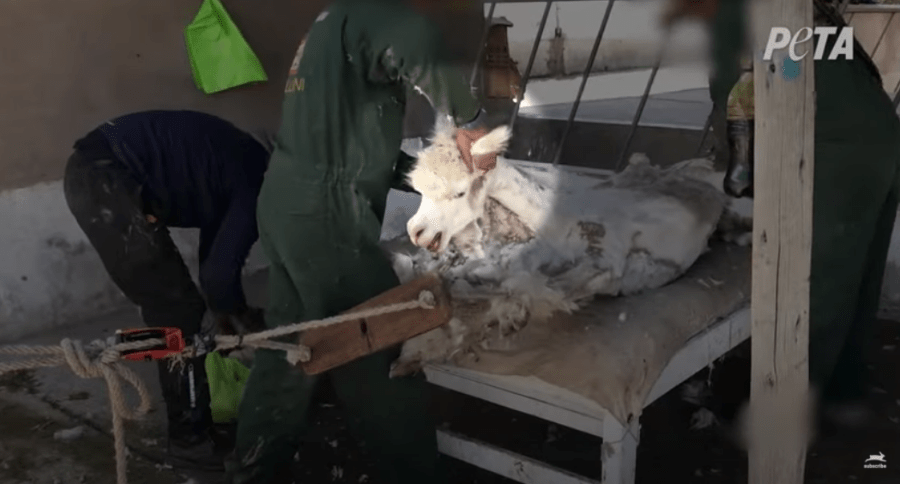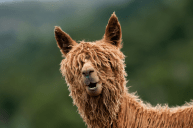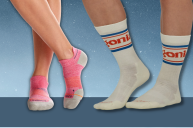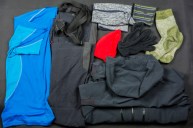PETA released a video that could be considered graphic, so we want to warn you before you play it. Remember this the next time you think about buying Alpaca fleece, particularly made in Peru. This footage is from Peru's top alpaca producer, and this quote is from PETA's article about the investigation. Peru is the world's top alpaca fiber producer.
"A disturbing, first-of-its-kind PETA undercover investigation reveals that workers hit, kicked, tied down, and mutilated pregnant, crying alpacas in Peru, the world's top alpaca producer.
"This groundbreaking footage highlights just some of the abuse documented at Mallkini, the world's largest privately owned alpaca farm, near Muñani, Peru. Mallkini is owned by the Michell Group, the world's largest exporter of alpaca tops and yarn."
Here are some important facts about these beautiful animals if you're not familiar with the Alpaca species. Check out the last fact and imagine how these sentient beings must feel in Peru when it's time to collect their fleece:
- They belong to the Camelidae (camel family) family of course!
- Alpaca fiber is much like sheep's wool! It is lacking in lanolin, which makes it hypoallergenic and also allows it to be processed without the need for high temperatures.
- The fiber is both flame-resistant and water-resistant
- Alpacas come in two types: Suri and the huacaya alpaca. The suri has fiber that grows long and forms silky dreadlocks. The huacaya alpaca has a wooly, dense, crimped fleece.
- During breeding, the male alpaca emits a unique throaty vocalization called "orgling." They hum!
If you plan to raise alpacas, they must be raised in pairs as they can die from loneliness. So make sure your baby alpaca (known as cria) has a companion.
Here's the video:
Alpaca wool is much softer than a llama's double-layered coat. Alpaca fleece has finer fiber and it comes in 22 colors! There are two different breeds of alpaca used for wool: the Suri and the Huacaya. Alpacas also have a single coat and their hair is better for people who may be allergic to sheep wool guard hairs.
What is alpaca wool used for?
Big Sky Fishing tells us that Alpaca fleece is significantly softer than normal wool.
"The best comparison for Alpaca fleece is that it is roughly equivalent in softness and insulating abilities to Merino wool, which is used in Ugg Boots, Smartwool socks, and other hearling products from New Zealand and Australia. Additionally, Alpaca fleece, similar to Merino Wool, does not have the "scratchy" feeling that normal wool has."
Is alpaca wool expensive?
Yes. The alpaca fu is expensive because it is naturally light, but can be spun heavier to add weight. Overall, it's one of the most luxurious and silky natural fibers.
While alpaca fibers sell for between $2 and $4 per ounce at the higher-end of quality, average wholesale prices for alpaca fiber ranges between $0.50 to $0.75 per ounce.
What is alpaca wool called?
The hair of the alpaca is called fleece or fiber, rather than 'fur' or 'wool.'
How is alpaca wool made?
According to Sewport, the process is simple:
- The alpaca wool production process begins with the shearing of an alpaca. Farmers may stagger the shearing process so that each animal is ready to be shorn at a different time, or they might shear their animals all at once.
- An alpaca is ready for shearing when its hair has reached a certain length. In addition, the ideal shearing time varies between the types of alpacas, Huacaya and Suri alpacas.
- The wool from an alpaca is usually shorn with scissors, and this process is done by hand to avoid harming the animal. Alpaca breeders shear their animals close to the skin, and they usually shear almost the entire body.
- The wool made from Huacaya alpacas is naturally crimpy, which is when wool develops a wavy appearance as it is woven.
- This type of wool are equipped with tiny air pockets, and these tiny spaces provide enhanced breathability.
The wool is spun into yarn. Alpaca garments (women's) and alpaca products like an alpaca sweater are high-quality.
Indigenous South Americans have bred alpacas for thousands of years. Bolivia and Chile are Peru's major competitors in the production of wool fibers. This fiber is also produced in the United States, Australia, New Zealand, as well as a number of other countries. The natural colors of the alpaca yarn and the fibers are stunning, making it a valuable commodity.
Did you know this about alpaca wool? Please leave a comment below!
WATCH NOW: This Farm Holds Llama Yoga Classes!
https://rumble.com/embed/u7gve.cc4f25/




